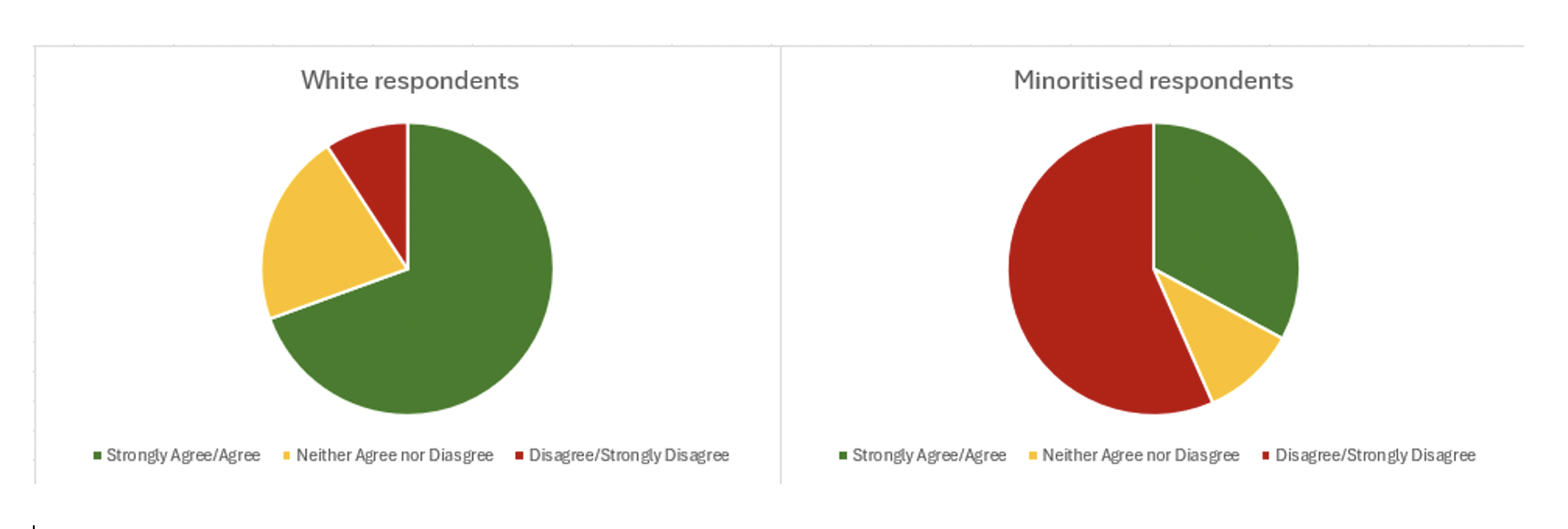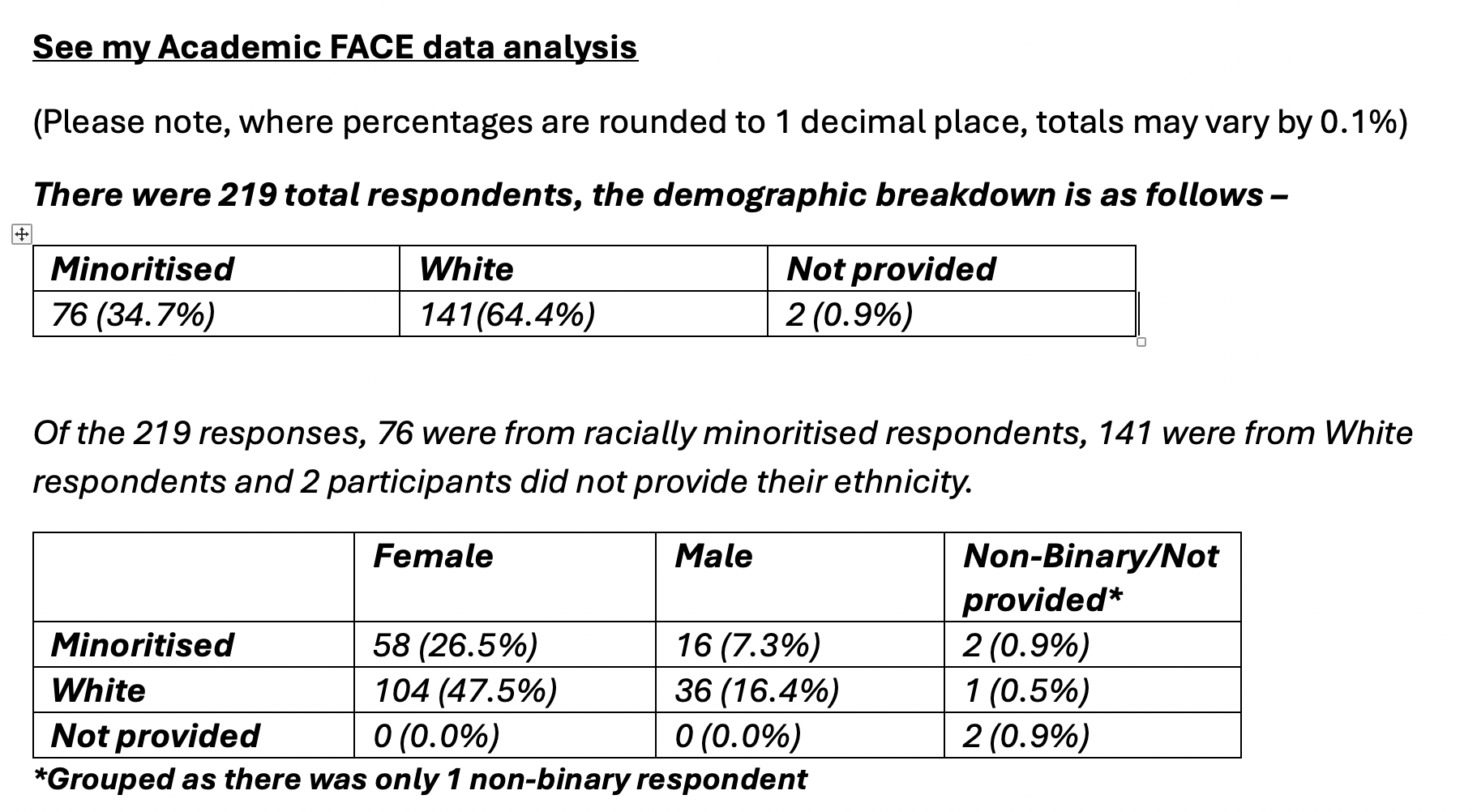See my Academic FACE data analysis
With thanks to Sonia Sood
This companion page is one of many included in the See My Academic FACE survey findings - officially released November 24
Below are topline findings with access to the full PDF percentages further down.
38.2% of Minoritised respondents said that they identified bias in the recruitment process, compared with 17.7% of white respondents, a difference of 20.5pp.
The group most likely to have identified bias in the recruitment process was Minoritised females, by a significant margin, with 44.8% of Minoritised female respondents indicating they had identified bias.
59.2% of Minoritised respondents said that they had refrained from calling out racism/microaggressions because they felt it would negatively affect how they were perceived, compared with 32.6% of White respondents.
63.2% of Minoritised respondents disclosed that they had been a victim of bullying or repeated microaggressions from an individual member of staff, compared with 41.8% of White respondents.
69.5% of White respondents indicated they did not feel isolated because they felt represented at the institution (Strongly Agree/Agree) compared with just 32.9% of Minoritised respondents, a significant difference of 36.6pp.
Likert scale questions. See full percentages break down here
Overall points to note
The most notable gaps between Minoritised and White respondents appear in relation to the question about feeling isolated or represented. Minoritised respondents were also more likely to have experienced bullying, victimisation or microaggressions and were more likely to refrain from calling this out of concern for how they would be perceived for doing so.
Minoritised respondents were also less likely to feel that support for them was well communicated and visible and more likely to have experience of raising a grievance and to have identified bias in the recruitment process.





